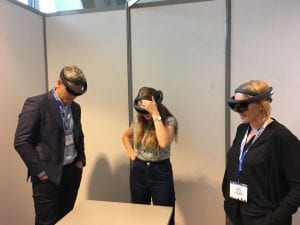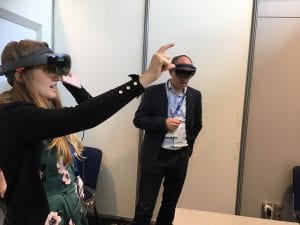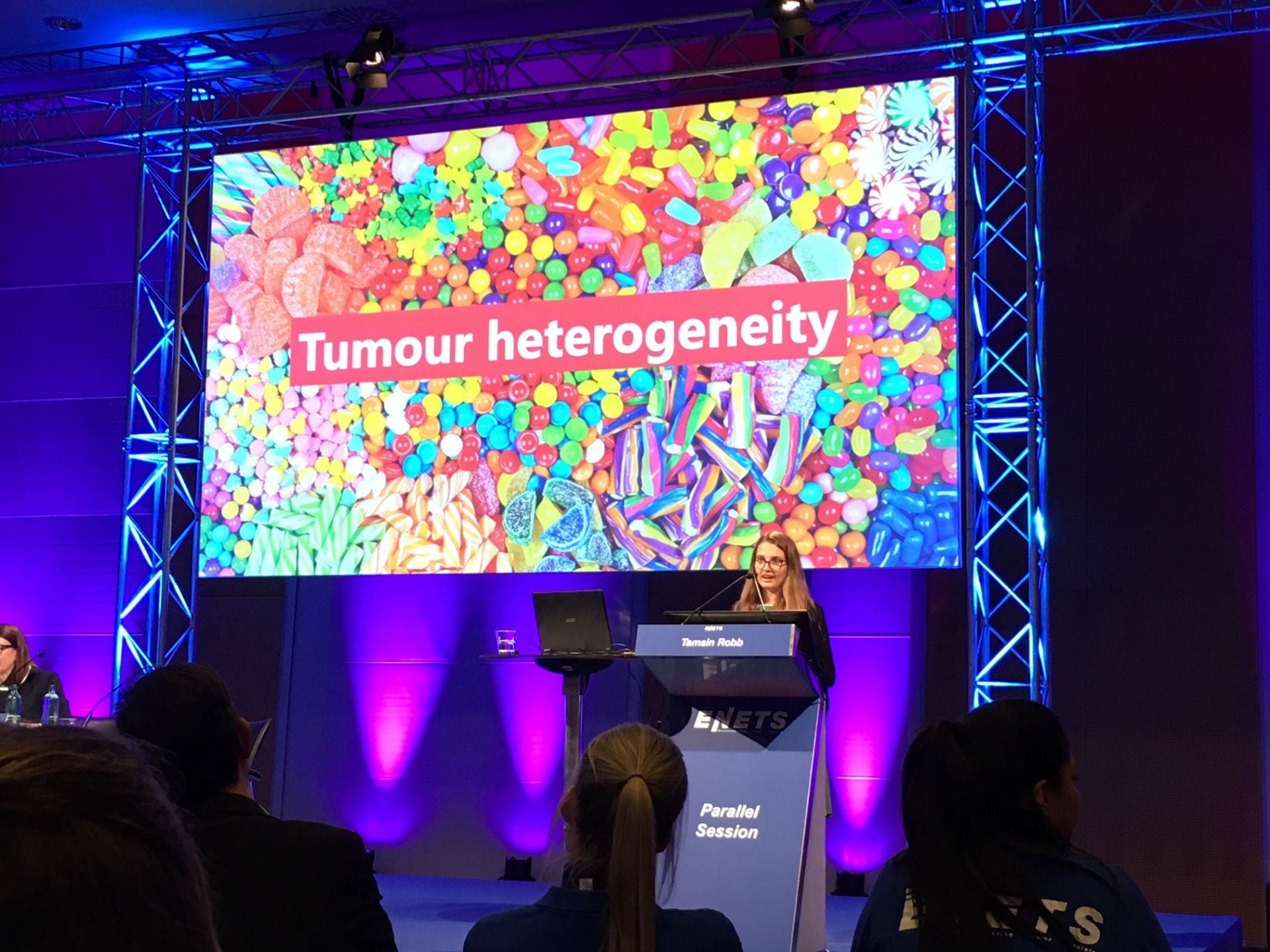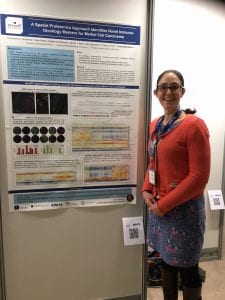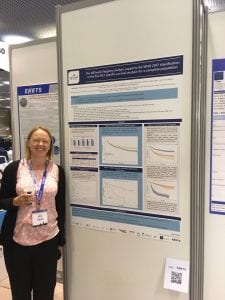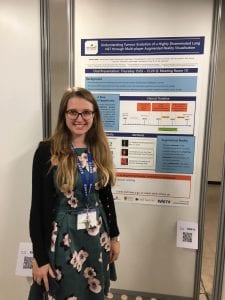The 16th Annual ENETS (European Neuroendocrine Tumor Society) Conference was held last week (6-8th March 2019). As always, it was a fantastic opportunity to connect with our international collaborators, and share our work with others who are passionate about improving care for NET patients.
Tamsin Robb, PhD student, gave an excellent talk (and poster) titled “Understanding Tumour Evolution of a Highly Disseminated Lung NET through Multi-player Augmented Reality Visualisation”.
The presentation was coupled with an opportunity to experience the technology individually during a session in the afternoon. This project is in collaboration with the Centre for eResearch and School of Architecture at the University of Auckland, and demonstrates a truly multidisciplinary approach to exploring and understanding complex NET features such as tumour heterogeneity.
Dr Cherie Blenkiron presented a poster titled “A Spatial Proteomics Approach Identifies Novel Immuno-Oncology Markers for Merkel Cell Carcinoma” looking at tumour heterogeneity and quantification of immune proteins in Merkel Cell Carcinoma, using an exciting technology Digital Spatial Profiling.
Dr Kate Parker presented a poster titled “The NETwork! Registry analysis supports the WHO 2017 classification in the first NET specific survival analysis for a complete population” which to our knowledge is the first study to analyse NET incidence and outcome using a whole national population as the denominator, and the first to report five year disease specific survival.
